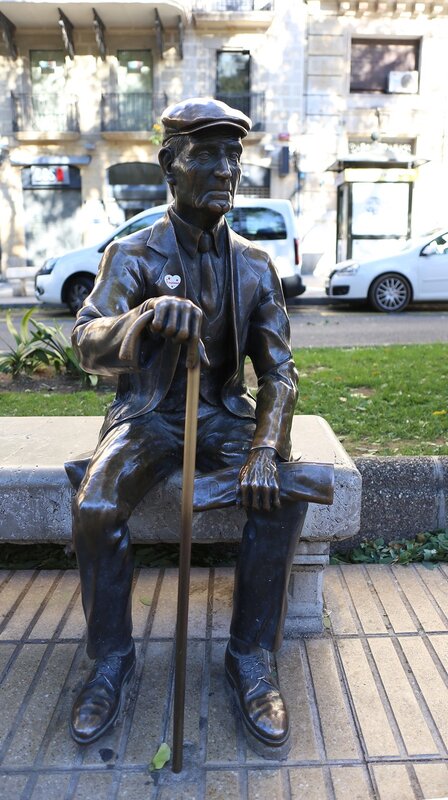New Rambla avenue (Rambla Nova). Casa Salas and Grandpa Virgili
The construction of the Boulevard, the centerline has become the new urban center was officially opened on 18 August 1854, on the site of the demolished city walls of San Juan. The winner of the competition of projects was Joseph Criveller (Josep Criviller). During the construction of the project neodnokratno was revised and finally approved only in 1857, after the death of the author. The construction was completed by his successor angel Romero (Romero'àngel). Boulevard linked the Upper and lower part of the city, stretching for 700 meters from the Mediterranean balcony, located at a height of 42 meters above sea level, to the Plaza Imperial Tarraco, below 18 meters. Originally the street was called the Esplanade, but residents sold pressed to call it San Juan, by name stood in the place of the Boulevard of the city wall. In 1899, the year of the death of the President of the Republic Castelar Emilio (Emilio Castelar) , was named "Rambla de Castelar", in 1931, the Second Republic was named "Rambla on April 14." After the Civil war, the Boulevard was named Generalissimo Franco. In the ' 70s, on the occasion of the centennial Boulevard, he was returned to the original name.
City theatre (El Teatre Tarragona map), built in 1923.

Building Casa Salas Ricomà map), one of the most unique homes of Tarragona, built in 1907 by architect Ramon Salas, Ricoma (Ramon Salas Ricomà) as their own homes. The house lined with natural stone and replete with elements of medieval architecture, decorated in art Nouveau style.

Well, it's not a masterpiece, but in the lack of imagination of the Builder is not to blame.

Another house in the style of late art Nouveau.

"Grandpa Virgilio" (Estàtua de l avi Virgili). In this lovely image depicted Tarragona's famous publisher and bibliographer the Virgili Josep (Josep Sanromà i Virgili, 1895-1993), a contemporary Catalan sculptor, Josep Agustí. The monument was opened in 1995.

Another interesting house whose style can be defined as the rationalism of the elements of decoration - the original form of the window openings.

School of teresiano (Collegi de les Teresianes map) founded in 1922 by the project Bernardi, G. martorelli (Bernardí Martorell i Puig), a disciple of gaudí. After his death in 1926, work was completed and Josep Antoni Pujol (Josep M. Pujol, Antoni Pujol). Behind the school building is Carmelite monastery.

Monument to the heroes of 1811 (Monument als herois de 1811 map). During the war with Napoleon, the city is almost 3 months resisted siege by vastly superior forces of the French. July 26, 1811, the French finally stormed the city streets and staged a real massacre of the civilian population, as residents took an active part in the defense of the city. The author of the sculptural group, made in 1911, on the centenary of the event, Julio Antonio (Antonio Julio Hernández Rodríguez). However, the monument was opened in 1931 - to this long debate about the ethics of installing the naked figure, as well as several financial and political scandals. The residents of the Tarragona monument called simply- "Naked" (Els Despullats).
